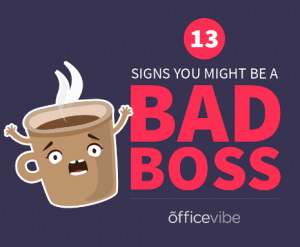
Your campaigns are built, the keyword targets are all in lock-step with the messaging, and the click-through rate is through the roof. However, there’s a problem: Your conversion rate is slipping. At this point, some marketers might be pulling their hair out trying to figure out the issue with their account, but time is thin. Sales is hounding you for results, and you’re about to call it quits. Nevertheless, you may have overlooked one key variable: the landing page.
Creating a PPC landing page tailored from the ground up to satisfy the search intent of the traffic you are sending it isn’t as hard as it might seem, and doing so creates the end-to-end solution your account needs to maximize its effectiveness. By following a few best-practice suggestions, you will be well on your way to increasing your conversion rates, thereby providing not only peace of mind, but also job security. Arm yourself with these suggestions for your next PPC landing page to ensure success.
Search Intent, Search Intent, Search Intent
Before creating your PPC landing page, you should understand what visitors are looking to find. This involves putting yourself in their shoes for a moment. Are they searching for a niche B2B solution? Are they browsing for assets that might help them in their own job? How high in the funnel is this traffic? Understanding the search intent of each visitor provides the foundation you need to effectively frame your copy to specifically cater to that intent.
Perfect the Layout
Westerners are all trained from birth to take in information from left to right. In fact, you’re doing so right now (likely without a second thought). This is a powerful phenomenon, and leveraging it in the design of your lander means visitors can quickly see the most crucial elements of your copy. Create a strong headline over a left-hand column of copy that effectively assures visitors they are in the right place. In the copy itself, use a short paragraph to contextualize why it’s worth the visitor’s time to stick around. And this leads me to the next point.
Capture Their Interest…
Your PPC landing page has less than 5 seconds to convince visitors that they shouldn’t bounce off-site, thus wasting your click spend in an instant. Oftentimes, the first element visitors see after the page’s main header is bulleted text. Try to boil down the entire purpose of the page along with several enticing benefits to filling out your form into 3–5 bullets below the intro paragraph. These bullets pull busy visitors deeper into the copy, and they will thank you with higher conversion rates.
…and Their Information
Whether you are offering gated assets or just looking for demo requests, carefully think about the form itself. In fact, it is probably the most important element of your PPC landing page. First thing’s first, your form should live above the fold whenever possible. In the case of our example, that means it should be in a right-hand column beside your copy. Don’t hide the fact that you are looking for form-fills. Visitors like to know what’s expected of them when they land.
Now that that’s out of the way, think about the information you need to gather on your form. HubSpot has a great article that is nearly canon in some circles about how the number of fields on your form affects conversion rates. And guess what? Fewer form fields generally equals more conversions. So what do you need to gather from your visitors. In most cases, a name, email address, and company suffice. You have to understand your CRM to know for sure, but don’t overlook this factor if you want to really streamline your landing page’s performance.
Call Visitors to Action
The final landing page element you should be focusing on is the call to action (CTA). This normally manifests as a button at the end of your form and for good reason. Having a strong CTA at the end gives visitors a concrete understanding of what filling out your form gets them, and more importantly, it does so quickly. Use the CTA to give your visitors a reason why they should complete your form, and don’t be afraid to get creative. You should also make sure your CTA is called out visually on the page. Use visually dynamic colors in the CTA button, and it will be one of the first page elements your visitors see.
Last But Not Least
Test EVERYTHING! Split test offers, CTAs, copy, layout, everything. Determining what works for different verticals is tricky, but in the world of the modern marketer, data is everywhere. Learning what works for your client is something you have to test to find out. Ultimately, finding the right mix of the elements above ensures your PPC landing page is the rockstar performer it can be.
Digital & Social Articles on Business 2 Community(75)
Report Post



